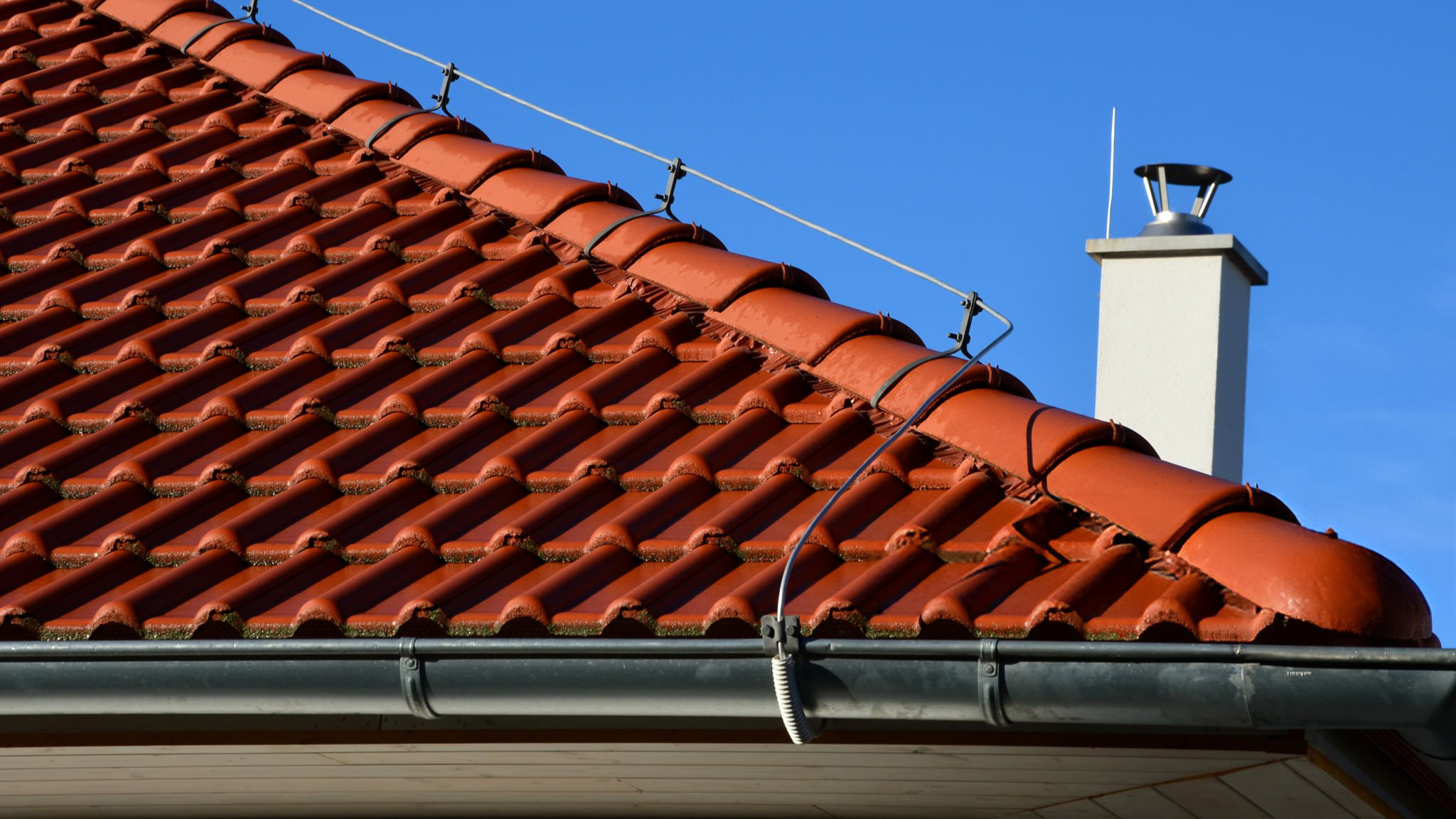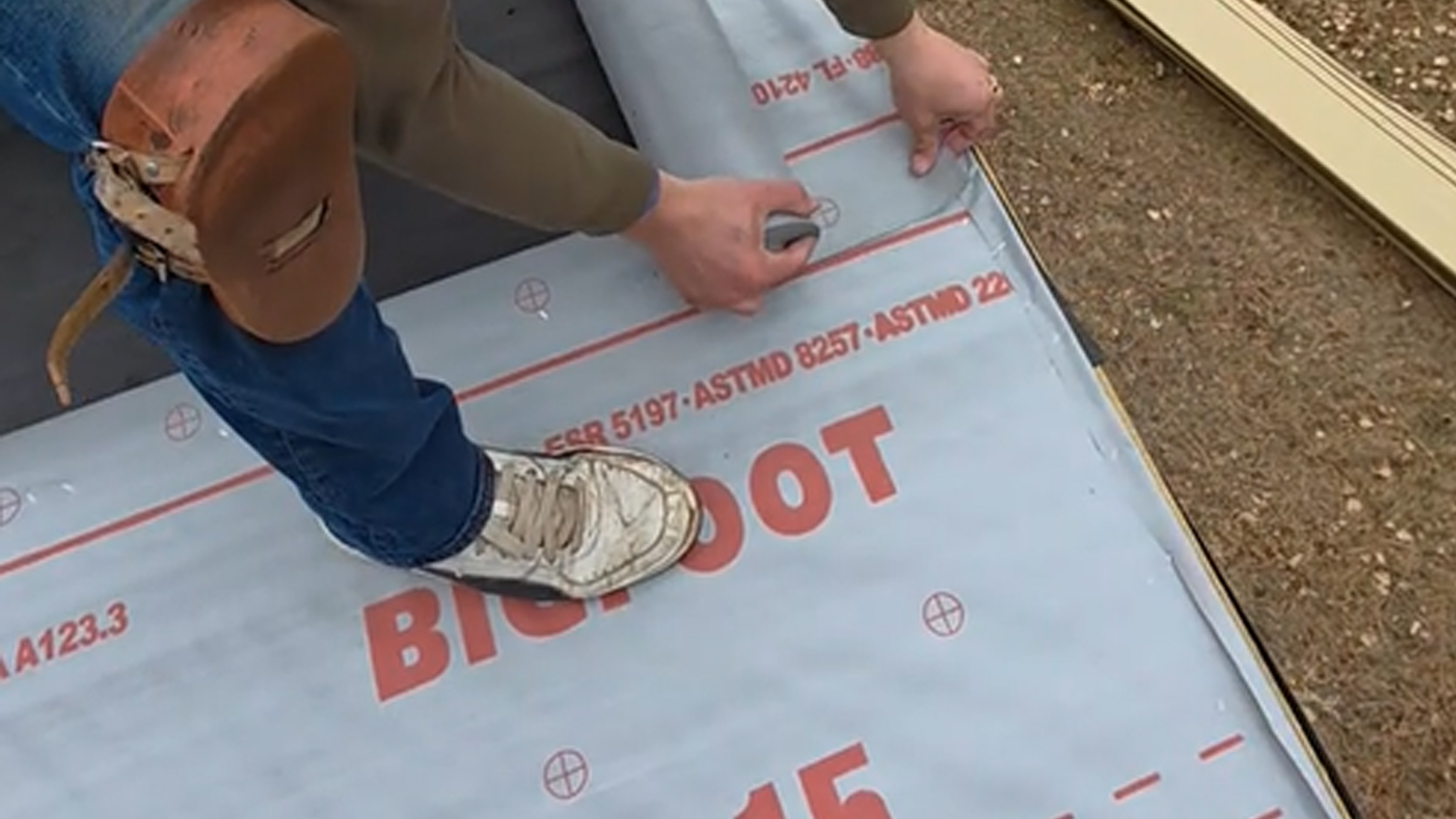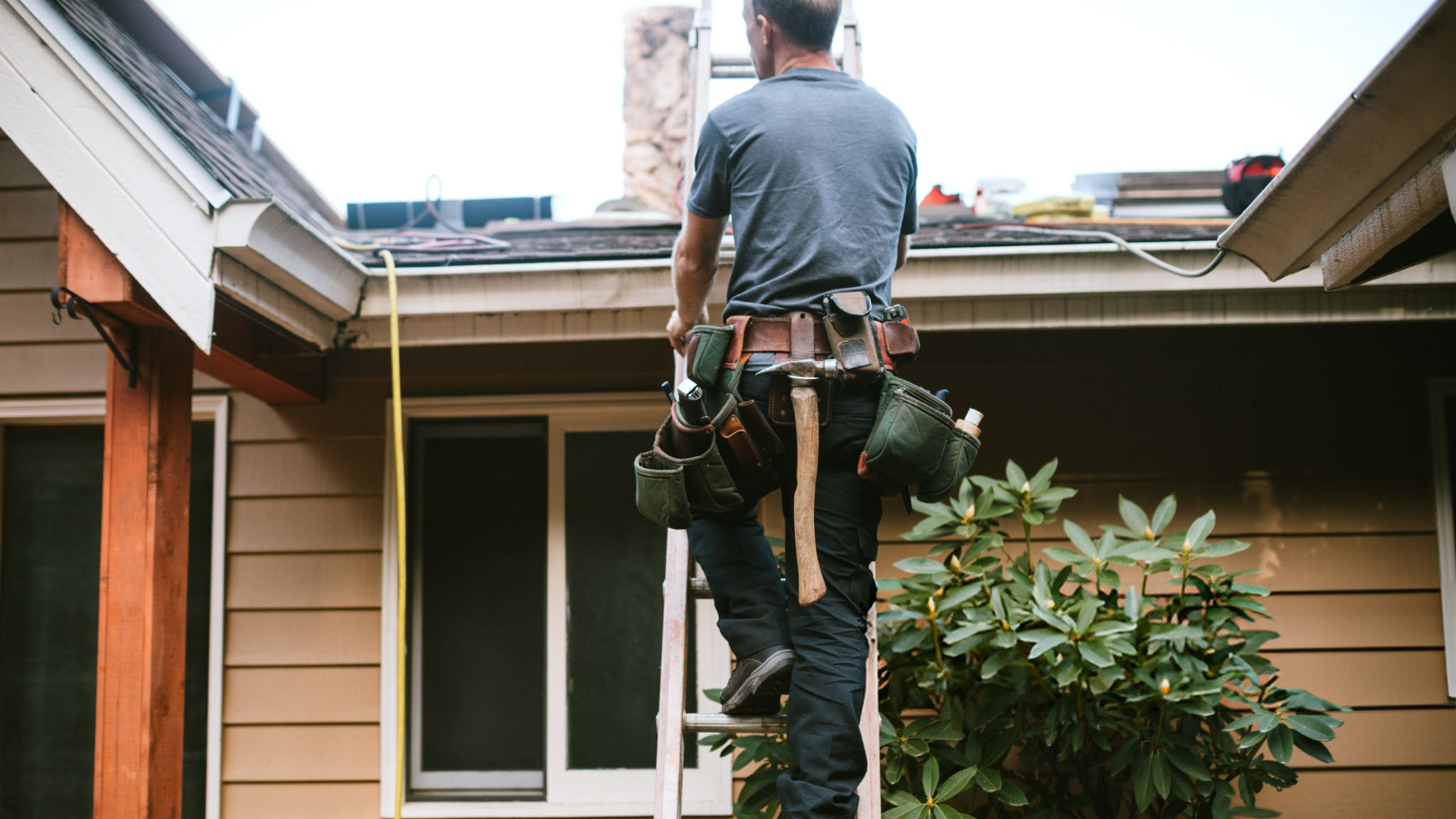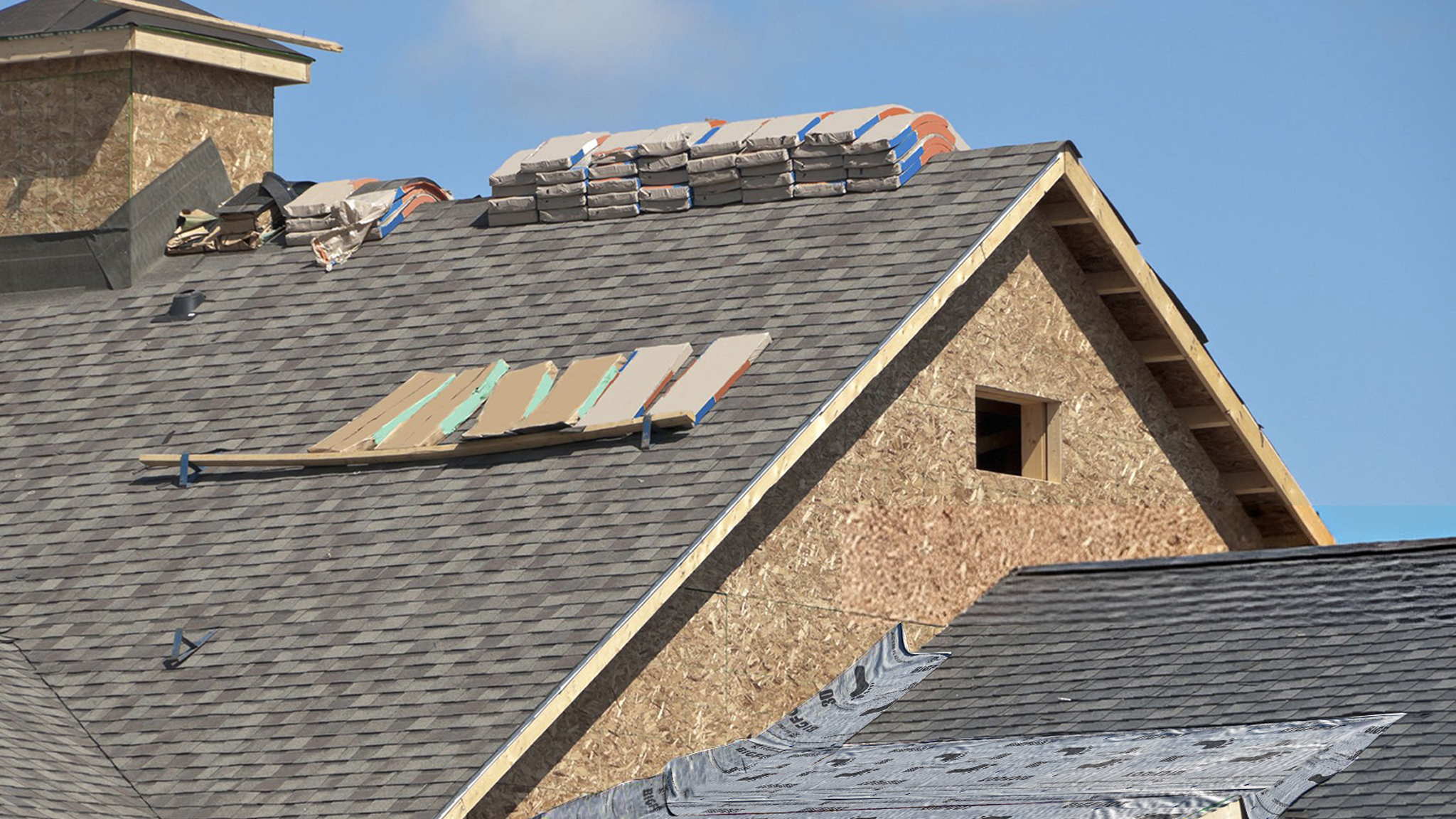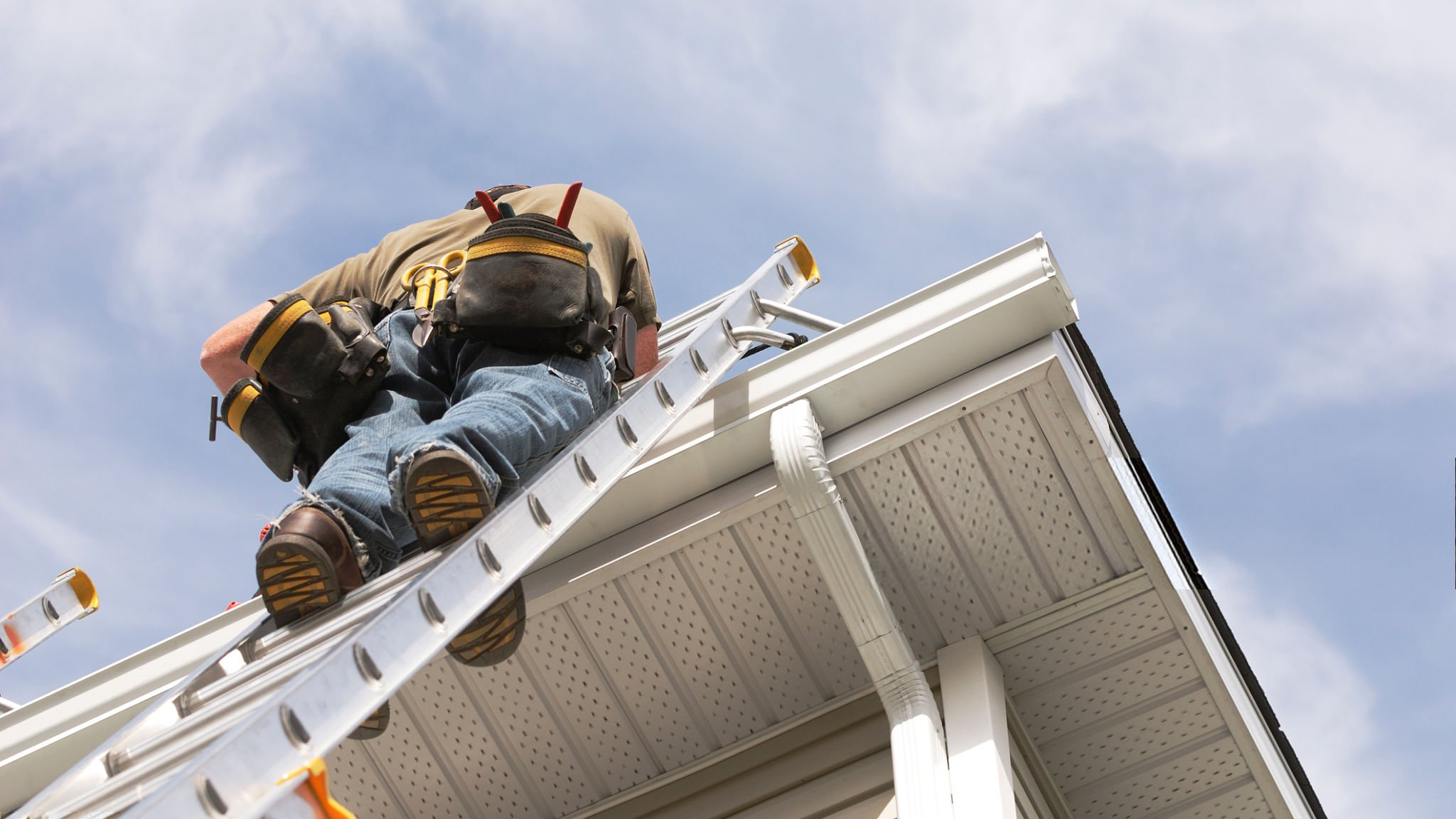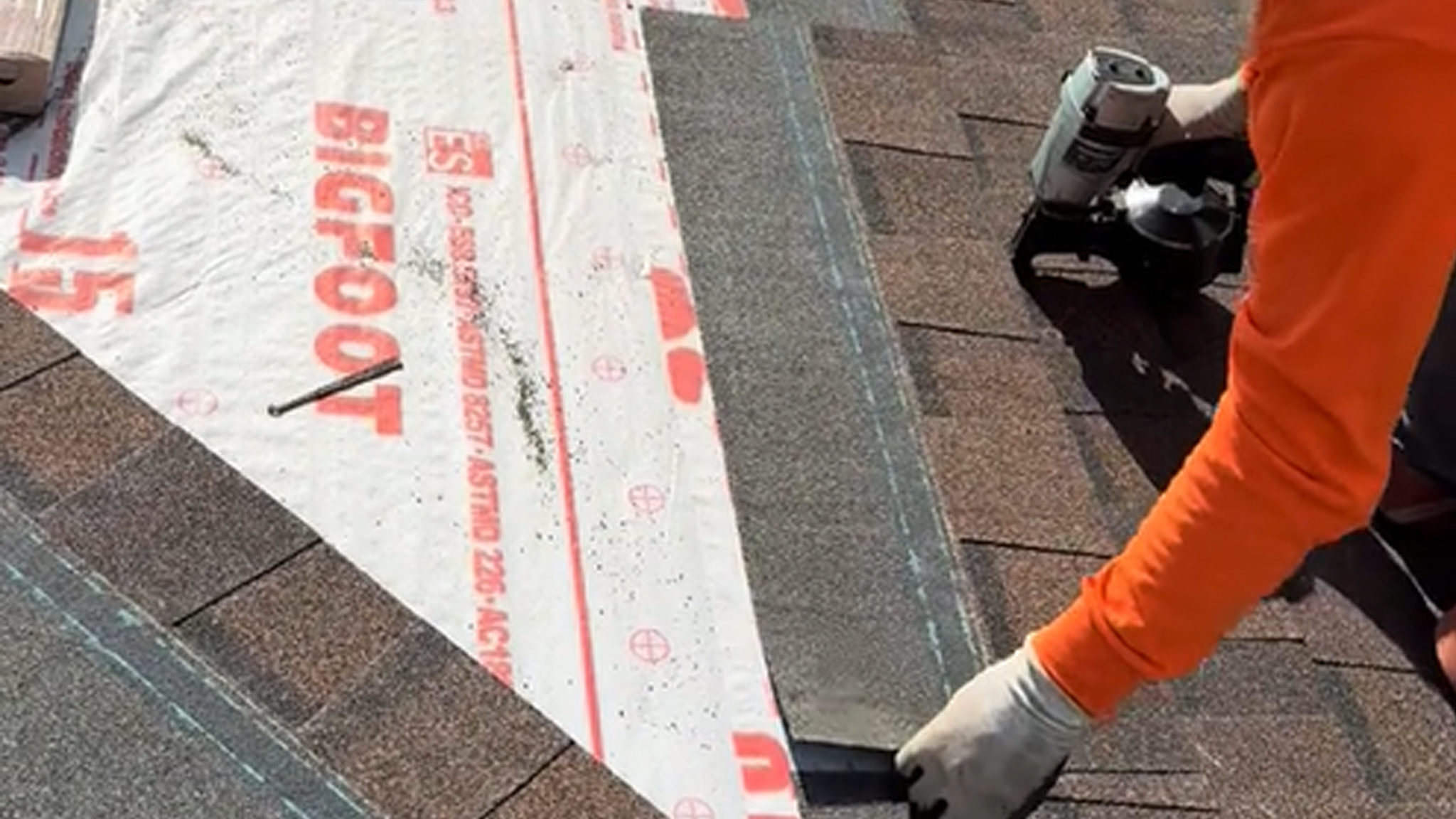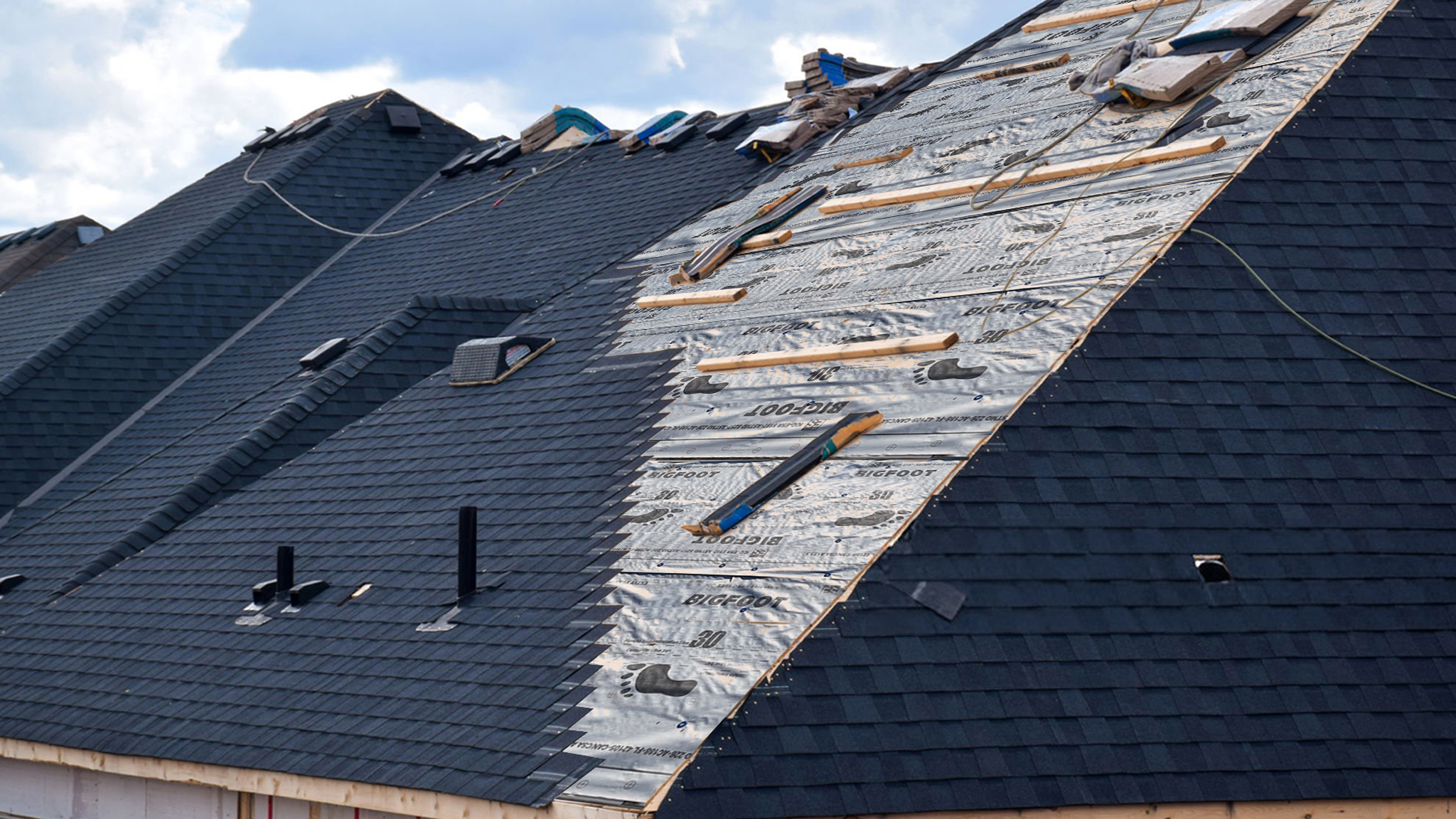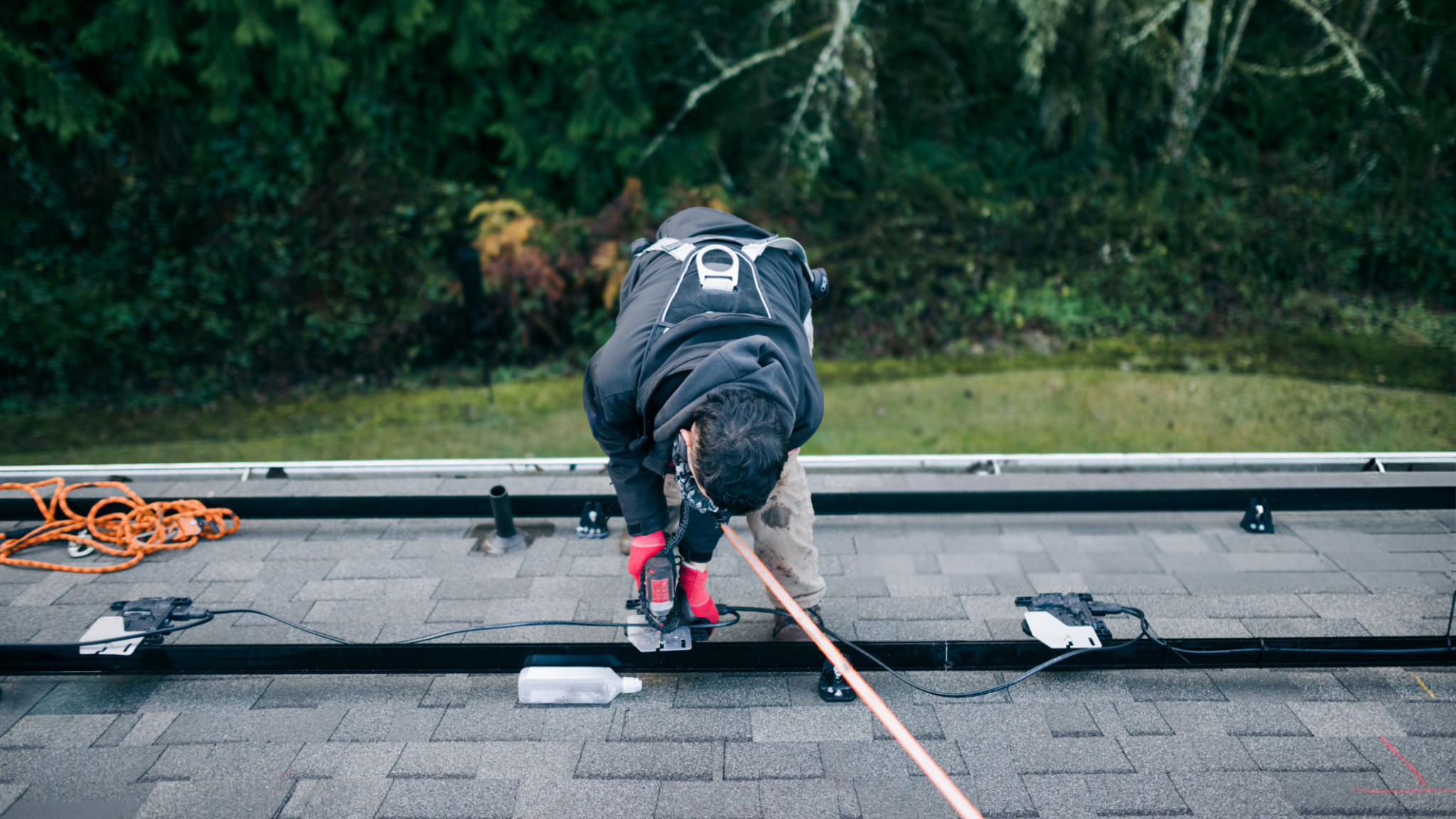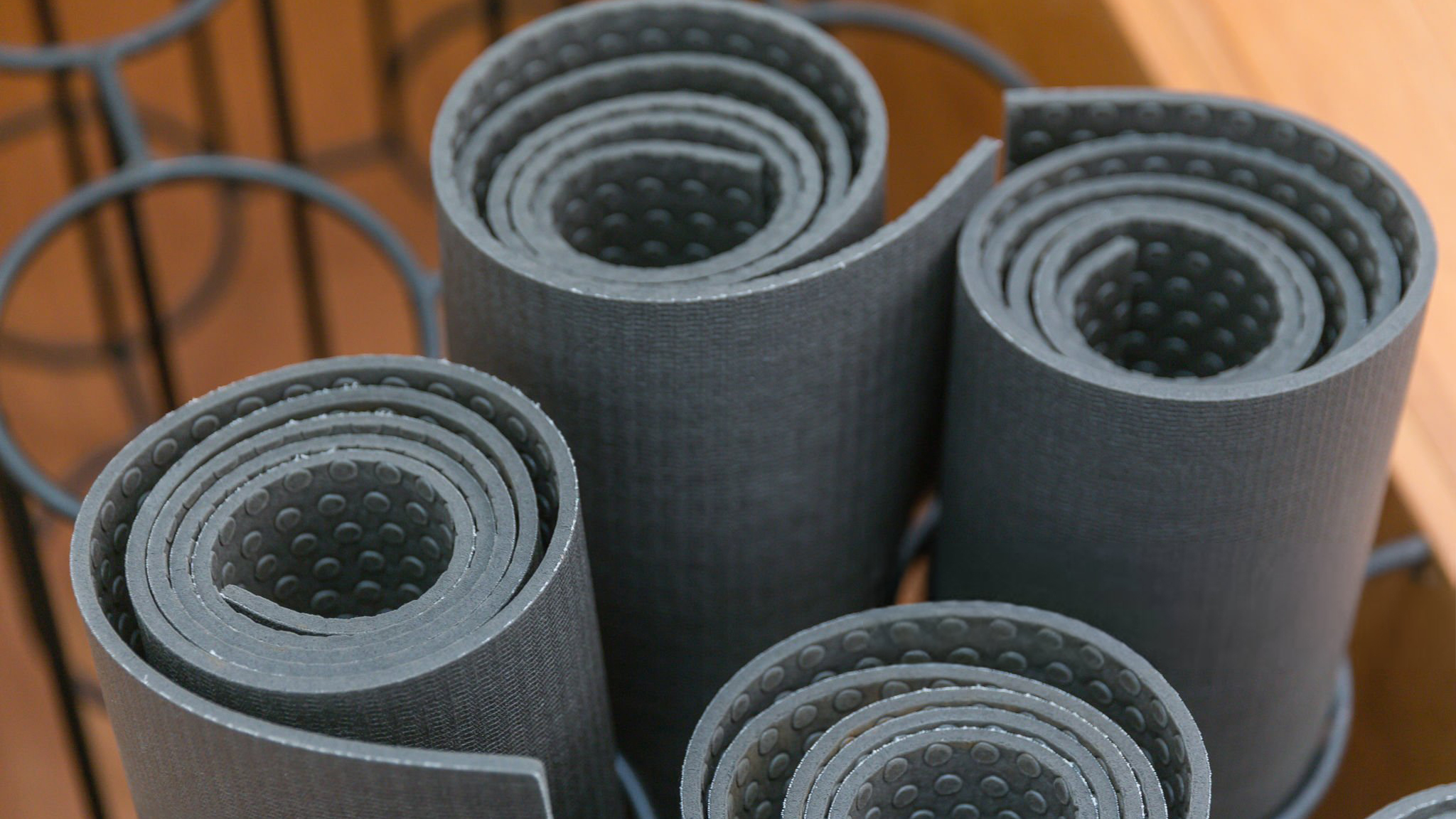Roof Synthetic Underlayment's Environmental Adaptability: Confronting Extreme Weather Challenges
The design and application of roof synthetic underlayment is not just for waterproofing; its environmental adaptability determines whether
it can maintain long-term performance under extreme climate conditions. In the context of global climate change, roofing materials are
facing increasing challenges, especially in variable and extreme weather conditions, making the performance of roof synthetic underlayment
a crucial factor.
1. Adapting to High-Temperature Environments
During hot summer months, roofs are often subjected to intense heat radiation, particularly in tropical and subtropical regions, where the
extreme temperature fluctuations can have significant impacts on traditional materials. Synthetic underlayment, particularly TPO (
Thermoplastic Polyolefin) and PVC (Polyvinyl Chloride) materials, excels with its excellent heat resistance, maintaining stability even in
high-temperature environments.
These materials offer high thermal stability and can withstand prolonged exposure to high temperatures without deforming or losing
their original strength. Especially during scorching summers, synthetic underlayment effectively resists expansion caused by heat,
preventing structural issues resulting from material swelling or softening.
2. Dealing with Extremely Cold Environments
For buildings in cold climates, roofing materials must contend with low temperatures and frost. Traditional roofing underlayment materials
may become brittle, lose their elasticity, or even crack in extremely cold conditions. However, synthetic underlayment demonstrates excellent
low-temperature flexibility. For example, PVC and TPO materials retain their flexibility even in cold weather, unlike traditional materials that
may become brittle.
Additionally, synthetic underlayment maintains a certain level of elasticity in cold environments, which is particularly important for roofs
in northern or colder regions. Even during snow-covered winters, they adapt to temperature changes, preventing damage from the
contraction and expansion of the roof.
3. Waterproofing and Humid Climates
In rainy climates, the waterproofing ability of roof underlayment is critical. This is especially true in tropical areas or coastal cities, where
heavy rainfall and high humidity are common. Synthetic underlayment materials like PVC and TPO offer excellent waterproofing properties.
Their non-porous structure effectively prevents water penetration, ensuring that the underlying roof structure remains dry and secure.
In contrast, traditional materials may suffer from water penetration in high-humidity environments, leading to mold, rot, or rust. Due to its
high resistance to moisture, synthetic underlayment avoids such issues, adapting to humid environments while maintaining long-term
waterproof performance.
4. UV Resistance and Durability
UV rays are a significant factor in determining the lifespan of roofing materials, particularly in areas with intense sunlight. Prolonged
exposure to UV radiation can cause roofing materials to age, become brittle, or crack. However, synthetic underlayment materials like
TPO and PVC are manufactured with UV-resistant additives, ensuring they maintain a long service life even in high-intensity UV
environments.
These materials' aging resistance makes them perform exceptionally well under solar radiation, reducing UV damage and extending the
lifespan of the roof system. Moreover, synthetic materials' UV resistance ensures that they will not fade or crack like some traditional
materials.
5. Wind Resistance and Extreme Weather
For roofs in windy regions, strong winds and heavy rainfall are common causes of roof damage. Roof synthetic underlayment, particularly
those made from high-strength polymer materials, effectively resists strong winds. These materials' strength and flexibility allow them to
withstand the pressure from high winds, preventing tearing or damage during storms.
For example, TPO and PVC materials remain securely fixed even under high wind speeds. In extreme weather conditions such as hurricanes,
they can withstand the force of the wind, reducing the risk of roof damage.
Conclusion
The environmental adaptability of roof synthetic underlayment determines its performance in different climate conditions. Whether in high
temperatures, low temperatures, humid conditions, or intense UV radiation, synthetic underlayment effectively addresses these
environmental challenges and provides long-term protective functionality. Therefore, roof synthetic underlayment not only meets
everyday usage requirements but also maintains stability in extreme weather conditions, making it an essential component of modern
building roofing systems.
2025-04-07
DETAIL

Discussion on the Application, Installation, and Maintenance of Roof Synthetic Underlayment
Roof synthetic underlayment plays a crucial role in construction and roofing. Not only is it a part of the roofing system, but it also serves
multiple functions to ensure the durability and performance of a building. Roof synthetic underlayment is typically made of synthetic
materials and provides an additional protective layer, preventing water penetration, improving thermal insulation, and extending the roof's
lifespan. Below, we will discuss the application, installation process, and maintenance and inspection of roof synthetic underlayment.
Application of Roof Synthetic Underlayment
Roof synthetic underlayment is widely used in various types of roofs, including flat roofs, sloped roofs, metal roofs, and tile roofs. One of
its main functions is to provide an additional waterproof layer for the structure beneath the roof. This underlayment material effectively
prevents water penetration caused by weather changes, heavy rain, or snow accumulation. At the same time, synthetic underlayment also
enhances the roof’s thermal insulation performance. This is especially important in regions with significant temperature variations, as it
helps to reduce the transfer of hot and cold air, maintaining a stable indoor temperature.
In addition to waterproofing and insulation, roof synthetic underlayment can also play a role in noise reduction. Particularly in metal
roofing systems, the underlayment helps reduce the noise caused by rain or hail hitting the roof, improving indoor comfort. Overall, roof
synthetic underlayment provides additional protection for buildings, extending the roof’s lifespan while also improving the building's
energy efficiency.
Maintenance and Inspection
Although roof synthetic underlayment is highly durable, it still requires regular inspection and maintenance over time. This is especially
important after extreme weather conditions or natural disasters, when the integrity of the underlayment should be thoroughly checked.
The inspection mainly focuses on identifying any damage, wrinkles, or detachment on the surface of the synthetic underlayment, especially
at the seams and edges. If any damage or abnormalities are found, it should be promptly repaired to avoid affecting the overall performance
of the roofing system.
Additionally, regular checks should be made to ensure that the drainage system beneath the underlayment is clear and functioning
properly, allowing water to be effectively drained away. Periodic cleaning of the roof to remove debris, such as leaves or snow, is essential
to prevent blockage of water flow or damage to the underlayment.
Environmental Factors Affecting Roof Synthetic Underlayment
The climate conditions in different regions have a significant impact on the performance of roof synthetic underlayment. For example,
in hot climates, the synthetic underlayment needs to have strong heat resistance to prevent material aging or failure under high
temperatures. In colder climates, the underlayment's freeze resistance and crack resistance become crucial. This means that selecting
the appropriate underlayment material and installation method to suit different environmental conditions is important to ensure the
long-term stability of the roof.
In conclusion, roof synthetic underlayment is not just a simple waterproof material; it plays a multi-faceted role in improving building
performance, extending its lifespan, and enhancing comfort. During installation, maintenance, and use, it is important to consider various
factors to ensure that the underlayment performs its intended function fully.
2025-04-03
DETAIL

Development Trends of Synthetic Roof Underlayment Technology
In recent years, with the increasing demand for environmental protection and sustainability in the construction industry, synthetic roof
underlayment technology has continuously developed, becoming an important innovation in roofing construction. Synthetic roof
underlayment, typically made from materials such as polyester and polyolefin, not only enhances the performance of roofing systems
but also plays a positive role in wind resistance, insulation, and waterproofing. As the global focus on building energy efficiency,
environmental protection, and reducing energy consumption continues to rise, the demand for synthetic roof underlayment has also
grown, making it a crucial component in many new construction and renovation projects.
In the past few years, the application of synthetic roof underlayment has steadily increased worldwide. This trend is particularly evident in
regions with complex or extreme climates, where the advantages of synthetic underlayment are increasingly noticeable. Manufacturers
and research teams have continuously optimized raw materials and production processes, improving the durability and adaptability of the
underlayment. For example, some synthetic roof underlayment products have incorporated more efficient waterproofing technologies,
making them more competitive in regions with high humidity or frequent rainfall. At the same time, with advancements in technology, the
UV resistance of synthetic materials has significantly improved, effectively resisting prolonged exposure to sunlight and reducing aging
caused by UV radiation.
It is noteworthy that, with the continuous innovation in roofing technology, the production process of synthetic roof underlayment has
also become more refined and environmentally friendly. Many manufacturers have adopted green manufacturing methods, reducing
energy consumption and waste emissions while improving production efficiency. Some companies have also begun to use recycled
materials as raw materials for synthetic roof underlayment. This not only reduces production costs but also promotes resource recycling,
minimizing the environmental burden. This approach has garnered increasing support from industry participants and has further expanded
the use of synthetic roof underlayment in the field of environmental protection.
The demand for synthetic roof underlayment varies by region. For example, in areas with more humid or rainy climates, synthetic
underlayment with stronger waterproofing properties has garnered wider attention. Such underlayment can effectively prevent water
penetration, protect roofing materials from moisture damage, and extend the service life of the building. In regions with extreme climatic
conditions, such as those prone to sandstorms, the demand for underlayment materials with wind resistance and high-temperature
durability has also grown. Some companies have developed advanced underlayment materials specifically for these harsh environments,
which not only withstand high temperatures but also effectively block dust and other severe weather impacts. As a result, the development
of synthetic roof underlayment has become more diverse, with a broader product line designed to meet the specific needs of different
regions and climates.
Additionally, the development of synthetic roof underlayment technology is not limited to material improvements but also involves
innovations in installation and maintenance methods. With the introduction of smart technology, some new synthetic roof underlayment
products now feature automatic monitoring capabilities, enabling real-time tracking of roof conditions, such as temperature, humidity,
and wind resistance. This ensures the stable operation of the roofing system. The introduction of such intelligent monitoring systems has
greatly improved the efficiency of roof management, providing building owners with more convenient maintenance options and reducing
long-term maintenance costs.
Industry experts point out that the maturity of synthetic roof underlayment technology is making the installation and maintenance of roofing
systems more convenient and efficient. By coordinating the design with other parts of the roofing system, synthetic roof underlayment not
only enhances the overall performance of the building but also lowers roofing maintenance costs and extends the service life. This
technological advancement indicates that the future of the construction industry will place more emphasis on efficient and intelligent
solutions in material use and engineering design. With the increasing emphasis on green building, energy efficiency, and environmental
protection, synthetic roof underlayment technology is poised to play an increasingly important role in the construction industry.
As technology continues to evolve, the pace of innovation in synthetic roof underlayment is accelerating. Research teams are actively
exploring ways to integrate new environmentally friendly materials and smart technologies to meet more stringent environmental and
performance standards. Whether in material selection or in the design and construction phases, synthetic roof underlayment is progressing
toward greater efficiency and environmental sustainability. With the emergence of new eco-friendly materials and the incorporation of
intelligent control systems, synthetic roof underlayment will play an even more significant role in roofing technology applications. It is
expected that in the coming years, synthetic roof underlayment technology will continue to lead the innovation trend in the roofing sector.
2025-04-02
DETAIL

The Behind-the-Scenes Power that Enhances Roof Performance
Roof synthetic underlayment plays a crucial role in modern construction, especially in improving roof system performance and extending
service life. As an integral part of the roof system, it directly influences various aspects of the building, including waterproofing, wind
resistance, and thermal insulation. This article explores the practical applications and functions of roof synthetic underlayment, with a
focus on its role in different types of buildings.
Application of Roof Synthetic Underlayment in Residential Buildings
In residential buildings, roofs often face challenges from various weather conditions. Whether it is heavy rain, strong winds, or extreme
temperature fluctuations, roof synthetic underlayment provides effective protection. Particularly in flat-roofed buildings, the underlayment
forms a solid waterproof barrier, preventing water from penetrating the roof structure and avoiding issues such as corrosion and mold
growth.
Additionally, as energy efficiency requirements increase, the thermal insulation properties of the underlayment have become more
important. Especially during the summer, the underlayment can significantly reduce heat transfer, helping to maintain a stable indoor
temperature and reduce the load on air conditioning systems.
Role of Roof Synthetic Underlayment in Commercial Buildings
Commercial buildings are typically large in scale, with expansive roof areas. For these buildings, the role of roof synthetic underlayment
becomes even more significant. Especially in industrial buildings, the underlayment must withstand higher wind pressure, temperature
changes, and more complex environmental factors.
In these buildings, synthetic underlayment is often used in combination with metal roofing or other roofing materials to enhance the
strength and durability of the overall system. The waterproof layer plays a crucial role, effectively preventing leaks and reducing
maintenance costs due to roof damage. Additionally, since conditioning and heating.
Application of Roof Synthetic Underlayment in Industrial Buildings
The roofs of industrial buildings are usually required to bear heavy mechanical loads and withstand more severe environmental conditions.
In such buildings, the application of roof synthetic underlayment must ensure strength while also offering strong resistance to chemical
corrosion and UV damage. The synthetic underlayment helps to slow the aging of roofing materials under intense sunlight and high
temperatures, thus extending the roof system's service life.
At the same time, industrial buildings often have strict noise control requirements, particularly in densely populated production facilities.
The soundproofing effect of roof synthetic underlayment can effectively reduce external noise disturbances, creating a more comfortable
work environment.
Importance of Roof Synthetic Underlayment in Green Buildings
The rise of green building and sustainable construction concepts has led to broader applications of roof synthetic underlayment. In
these buildings, the roof not only serves as an external protective layer but also plays an important environmental role. The synthetic
underlayment contributes significantly to improving the roof system’s energy efficiency and extending its service life.
For green buildings, roof synthetic underlayment provides effective thermal insulation, reducing energy consumption and mitigating the
impact of external weather conditions on the building's interior. These roofs are often combined with green roofing designs, and the
underlayment offers a stable base, preventing water infiltration and ensuring the proper functioning of the green roofing system.
Comprehensive Functionality of Roof Synthetic Underlayment
The application of roof synthetic underlayment is not limited to waterproofing and thermal insulation. Its comprehensive functionality
enables it to play a significant role in various building types. In commercial and industrial buildings, the underlayment can enhance the
stability of the roof system by providing additional wind resistance and corrosion protection. In residential and green buildings, the
energy efficiency advantages of the synthetic underlayment make these buildings more energy-efficient and in line with modern
sustainable construction demands.
In conclusion, roof synthetic underlayment, as a vital material in the roof system, demonstrates its versatility in various building types.
Through thoughtful design and application, it effectively enhances overall building performance, reduces long-term maintenance costs,
and makes notable contributions to energy conservation and environmental protection.
2025-03-31
DETAIL

A New Trend in the Construction Industry
Synthetic roof underlayment, an essential component in modern construction, is increasingly becoming a key part of roof system design.
This material, known for its unique functionality and reliability, is rapidly gaining popularity among architects, engineers, and contractors
in roofing construction and maintenance.
Typically made from polyethylene, polypropylene, or other synthetic materials, synthetic roof underlayment offers excellent waterproofing
and durability. It effectively prevents moisture penetration and resists the effects of UV radiation, oxidation, and temperature fluctuations. As
global climate change intensifies and environmental awareness grows, synthetic underlayment has emerged as an effective tool to enhance
roof system performance.
Currently, the use of synthetic roof underlayment is no longer limited to traditional residential buildings but is also expanding into
commercial and industrial construction. In regions where the demand to combat extreme weather conditions is increasing, the use of this
underlayment material is rapidly rising. According to industry experts, as construction technology continues to evolve, the application of
synthetic underlayment will become more widespread, playing a key role in ensuring the long-term stability of buildings.
Moreover, the design of synthetic roof underlayment continues to innovate. Many manufacturers are developing synthetic materials with
higher toughness and elasticity to address challenges in different environmental conditions. Additionally, the production processes for these
materials are gradually moving towards more eco-friendly and sustainable practices. This trend signals that future synthetic underlayments
will not only break through in performance but also achieve significant progress in environmental protection and resource conservation.
Standardization and regulation of synthetic roof underlayment have also become focal points in the industry. Local governments and
industry organizations are gradually introducing regulations that require the use of certified synthetic underlayment materials in roofing
construction to ensure safety and long-term reliability. This initiative not only provides guidance for industry development but also creates
a more favorable environment for material quality improvement and technological innovation.
In summary, synthetic roof underlayment, as an emerging building material, is changing the way roof systems are built and maintained
with its outstanding performance and wide applicability. As technology continues to advance, the future of synthetic underlayment will
be even more efficient, eco-friendly, and an indispensable component of the construction industry.
2025-03-28
DETAIL

Technological Innovations and Application Prospects of Roofing Synthetic Underlayment
With the continuous advancement of construction technology, roofing synthetic underlayment has become an indispensable component
of roof protection and enhancement systems in the building industry. In recent years, the technology of roofing synthetic underlayment
has been continuously updated, with a growing variety of materials ranging from traditional rubber to new synthetic polymers. These
innovative materials have significantly improved the protection capabilities, durability, and ease of installation of roofing systems.
Technological Innovations:
The development of roofing synthetic underlayment has evolved from simple waterproofing layers to multifunctional, high-performance
materials. The latest generation of synthetic underlayment uses advanced polymer technologies, providing better UV resistance and
enhanced durability, ensuring stable performance even in extreme climatic conditions. Particularly in environments with high temperatures,
low temperatures, and strong winds, these synthetic underlayments can effectively extend the lifespan of roofs and reduce maintenance
costs.
In addition, modern roofing synthetic underlayment designs not only focus on waterproofing but also offer improved compression
resistance and thermal insulation properties. For example, some new underlayment materials can effectively block external heat,
maintaining a stable indoor temperature and thereby enhancing a building's energy efficiency. This integrated design has greatly
improved the overall protective performance of roofing synthetic underlayment.
Installation Technology and Processes:
The installation technology of roofing synthetic underlayment has also made significant progress. Traditional underlayment installation
often requires considerable manual labor and extended time frames. Today, with the application of automation technologies, the installation
of modern roofing synthetic underlayment has become more efficient and straightforward. These new synthetic underlayment materials are
not only lightweight but also flexible, adapting to various roof structures. These innovative installation techniques have not only improved
efficiency but also reduced environmental impact during construction.
Expansion of Application Fields:
As the construction industry’s demands for performance and functionality continue to rise, the application fields of roofing synthetic
underlayment have also expanded. From commercial buildings and industrial factories to residential roofs, synthetic underlayment is
widely used across various building types. Especially in challenging environments, such as high-humidity areas or coastal climates, the
excellent waterproofing and corrosion resistance of synthetic underlayment make it the preferred choice for roof protection.
It is also noteworthy that with the rise of smart buildings, the functionality of roofing synthetic underlayment is increasingly integrated
with building automation systems. For example, roofing underlayment embedded with sensors can monitor temperature, humidity, and
other data in real-time, providing data support to building management systems for intelligent management and maintenance.
Conclusion:
The continuous innovation and application of roofing synthetic underlayment technology have not only enhanced the overall performance
of buildings but also better addressed the industry’s needs in waterproofing, insulation, and energy efficiency. With ongoing technological
advancements, roofing synthetic underlayment is expected to play an even more important role in various building sectors in the future.
2025-03-27
DETAIL

Application and Installation Techniques of Roof Synthetic Underlayment in Building Systems
The use of roof synthetic underlayment has become increasingly common in the construction industry, particularly in various types of
roofing systems. The application and installation of roof synthetic underlayment involve precise technical requirements, often requiring
customization based on the building’s structure, climate conditions, and specific usage needs.
The design of roof synthetic underlayment typically needs to balance both structural integrity and functionality. One of its key roles is to
provide an effective protective layer between the roof structure and the covering materials. This layer not only enhances the stability of the
roofing system but also plays a crucial role in waterproofing, moisture resistance, and thermal insulation. For example, in multi-layer roofing
systems, synthetic underlayment effectively protects the roof surface from external elements, extending the building's service life.
When installing roof synthetic underlayment, special attention must be paid to its connection with other roofing materials and the
sealing performance. The installation must ensure the overall stability of the roof while preventing moisture from infiltrating the building.
The compatibility of the underlayment material with the roof surface, the sealing techniques at the seams, and its performance under
extreme weather conditions all require careful consideration and testing.
Maintenance and inspection of roof synthetic underlayment are also crucial to ensuring the long-term effective operation of the roofing
system. Over time, the underlayment may be affected by factors such as UV exposure, temperature fluctuations, and moisture. Therefore,
regular checks for damage, deformation, or aging are essential to detect potential issues early, preventing roof system failures due to
underlayment problems, such as leaks or structural damage.
In conclusion, roof synthetic underlayment plays a vital role in modern construction. It not only affects the overall performance of the
roofing system but is also closely related to the building's safety and comfort. Its precise installation, proper design, and effective
maintenance ensure the roof's long-term stability and meet various usage requirements.
2025-03-26
DETAIL

Key Functions and Applications of Roofing Synthetic Underlayment
Roofing synthetic underlayment is a critical material used in building roof systems, typically made from synthetic materials such as
polyethylene, PVC, and others. As part of the roof structure, its primary function is to enhance the roof's overall performance, particularly
in terms of waterproofing and thermal insulation. With the advancement of building technologies and increasing demands for energy
efficiency, synthetic underlayment has become an essential component in modern architectural design.
Functions of Roofing Synthetic Underlayment
As an important layer in roofing systems, the key functions of synthetic underlayment are as follows:
Waterproof Protection: One of the core functions of roofing synthetic underlayment is waterproofing. It effectively prevents water
penetration, protecting the roof structure from rain and water accumulation. This function is particularly important in extreme weather
conditions, where the waterproof layer becomes crucial. The synthetic underlayment acts as an auxiliary material to enhance the roof's
waterproof performance.
Thermal Insulation: Synthetic underlayment often has good thermal insulation properties, helping the roof system maintain cooler
temperatures in the summer and retain warmth in the winter. By effectively blocking the transmission of external temperatures, the
underlayment reduces the load on air conditioning and heating systems, improving indoor comfort and saving energy.
Extending Roof Lifespan: By reducing the direct impact of external factors such as UV rays, wind, and rain, synthetic underlayment helps
extend the roof’s lifespan. It provides an additional protective layer, preventing premature wear and aging of roof materials.
Enhancing Structural Stability: The synthetic underlayment's role in the roofing system is not limited to waterproofing and insulation.
It also provides additional structural support for the roof, preventing deformation or damage caused by external forces.
Installation and Maintenance of Roofing Synthetic Underlayment
The installation of synthetic underlayment requires careful planning to align with the roof's structural design. Typically, the underlayment
is installed between the waterproof layer and roofing materials to ensure it provides both waterproofing and insulation functions. During
installation, workers must ensure that the underlayment material is tightly connected with other roof components to prevent leaks or heat
loss.
In terms of maintenance, synthetic underlayment should be regularly inspected, especially after heavy rainfall, snow, or prolonged exposure
to intense sunlight, to ensure it remains intact. Although synthetic underlayment is highly durable, any signs of damage or aging should be
addressed promptly to maintain the overall performance of the roof system.
Future Development of Roofing Synthetic Underlayment
As the construction industry increasingly focuses on energy efficiency and sustainability, the technology behind roofing synthetic
underlayment is continuously evolving. In the future, more innovative synthetic materials may be developed to provide even better
thermal insulation, waterproofing, and extended lifespans. Additionally, with the promotion of green building practices, synthetic
underlayment will likely be integrated with ecological roofing systems, rainwater harvesting systems, and other sustainable building
solutions to further enhance environmental performance.
In conclusion, roofing synthetic underlayment is not only an indispensable component of modern roofing systems but also an important
means of improving the overall performance of buildings and achieving energy-efficient and environmentally-friendly goals. As technology
advances and market demand increases, its applications will become even more widespread, making it a vital part of architectural design.
2025-03-25
DETAIL

The New Darling of the Construction Industry, Driving the Green Building Revolution
As global attention on environmental protection and energy efficiency continues to rise, the construction industry is undergoing a
transformation centered around sustainability. In this revolution, synthetic roof underlayment materials, as an innovative building product,
are gradually emerging and becoming the core of new-generation roofing solutions.
The Rise of Synthetic Roof Underlayment
Synthetic roof underlayment, typically made from materials such as polyvinyl chloride (PVC), thermoplastic olefin (TPO), and ethylene
propylene diene monomer (EPDM), has become an ideal alternative to traditional roofing materials due to its excellent weather resistance,
waterproofing, and strong UV protection capabilities. Globally, the demand for synthetic roof underlayment is rapidly increasing, particularly
in regions where energy efficiency is a key focus.
Environmental Friendliness and Sustainability: Core Advantages of Synthetic Roof Underlayment
Synthetic roof underlayment not only offers exceptional performance in terms of functionality but also has environmental benefits, which
are a major driving force behind its rapid growth. First, synthetic materials tend to have a longer lifespan, reducing the frequency of
replacements and thus minimizing construction waste. Additionally, synthetic roof underlayment is often made from recyclable materials,
making it easier to recycle and reuse at the end of a building's life cycle. With the gradual implementation of global green building
standards, synthetic roof underlayment has become a key material for obtaining LEED (Leadership in Energy and Environmental Design)
certification and other environmental certifications.
Technological Innovation Driving Performance Enhancement
The technology behind synthetic roof underlayment continues to evolve to meet more stringent building standards and diverse
climate conditions. For example, TPO underlayment, with its excellent heat-reflective properties, helps reduce roof surface heat island
effects, lowering the cooling load of buildings and improving indoor temperature control. Additionally, PVC roofing underlayment offers
significant advantages in UV resistance and chemical corrosion protection, making it ideal for buildings in extreme climates.
Currently, more and more builders are adopting synthetic roof underlayment as an effective solution to improve building energy efficiency
and extend roof lifespan. Synthetic roof underlayment not only effectively seals out moisture but also enhances the thermal insulation of
roofs, contributing to more energy-efficient building designs.
Surging Market Demand and Bright Prospects for Synthetic Roof Underlayment
According to industry reports, the global synthetic roof underlayment market is expected to expand at a compound annual growth
rate (CAGR) of approximately 8% over the next five years. Particularly in regions such as the United States, Europe, and parts of Asia,
the demand for synthetic roof underlayment is growing as the construction industry increasingly seeks green materials. Whether in
commercial buildings, industrial facilities, or residential projects, the use of synthetic roof underlayment is becoming an indispensable
part of modern architectural design.
Many roofing contractors and construction companies have expressed that the use of synthetic roof underlayment has helped them
reduce roof maintenance costs while enhancing overall building performance. Moreover, as more environmental regulations are enacted,
buildings using synthetic roof underlayment are increasingly eligible for government green building subsidies and policy support.
Challenges and Future Outlook
Although the prospects for synthetic roof underlayment are highly promising, there are still some challenges. For instance, some
consumers and builders remain skeptical about the durability and environmental impact of synthetic materials, especially in markets
where traditional roofing materials still dominate. However, as technology continues to improve and material costs decrease, these
concerns are expected to be addressed, making synthetic roof underlayment more accessible and widely adopted.
Industry experts predict that with advancements in manufacturing processes and the push from environmental regulations, synthetic
roof underlayment will become a mainstream choice in the construction industry over the next few years. It will not only continue to
drive innovation in building materials but also contribute positively to global sustainability efforts.
Conclusion
The rise of synthetic roof underlayment marks a significant step toward a more environmentally friendly and energy-efficient
construction industry. With its exceptional performance and sustainability, synthetic roof underlayment will play an increasingly
important role in future construction projects. As technology continues to evolve and market demand grows, synthetic roof
underlayment is undoubtedly poised to become a vital component of modern buildings, driving the green building revolution
forward.
2025-03-24
DETAIL

An Emerging Trend in the Construction Industry
With the continuous advancement of construction technology and the increasing demand for durability and environmental sustainability
in buildings, synthetic roof underlayment has become an essential material in modern construction. As an alternative to traditional asphalt
underlayment, synthetic underlayment is rapidly gaining popularity and playing an increasingly important role in roofing projects.
Origin and Development of Synthetic Roof Underlayment
Synthetic roof underlayment was initially developed to address the shortcomings of traditional paper-based underlayment in terms of
waterproofing and durability. Early roofing underlayment was primarily made from asphalt and paper, which provided some level of
waterproofing but fell short in terms of durability and resistance to environmental conditions. These materials were prone to moisture
damage, decay, and could even lead to roof leaks. As the construction industry demanded higher-performing materials, synthetic
alternatives became more prevalent. Today, synthetic roof underlayment is widely used in various construction projects, becoming a
critical component of modern roofing systems due to its superior performance and diverse options.
Applications of Synthetic Roof Underlayment
The applications of synthetic roof underlayment are vast, ranging from residential homes to commercial buildings. It is installed beneath
the roofing shingles, providing a protective layer that shields the roof structure from water damage and extends the lifespan of the roof.
In new buildings, synthetic underlayment provides an extra layer of protection, ensuring the roof can withstand harsh weather conditions.
In roof renovations, it helps enhance the waterproofing of the structure, reducing the risk of leaks.
In particular, synthetic underlayment is highly beneficial in regions with high humidity or frequent rainfall, where it acts as a reliable
protective layer to prevent water infiltration and roof decay. Additionally, in extreme weather conditions such as strong winds or heavy
rain, the tear-resistant properties of synthetic underlayment provide extra protection for the roof.
Technological Advancements and Innovation Driving Development
The continued evolution of synthetic underlayment is driven by innovations in material science and manufacturing processes. Modern
synthetic underlayments are made from a variety of high-performance materials, including polypropylene, polyethylene, and other
synthetic fibers. These materials offer excellent waterproofing, UV resistance, and high-temperature tolerance, while also providing
increased mechanical strength, ensuring the underlayment performs well under harsh weather conditions.
In addition to material innovations, the production processes for synthetic underlayment have also improved. More manufacturers are
employing advanced coating technologies, making the surface of the underlayment smoother and more even, which further enhances
its waterproofing capabilities. Moreover, modern synthetic underlayment has been optimized for weight and flexibility, making it easier
and more efficient for contractors to install.
Industry Outlook and Future Prospects
With the growing emphasis on green building and sustainability, synthetic roof underlayment, as an eco-friendly and durable building
material, is expected to see continued demand. The construction industry’s ongoing need for higher-performing materials will further
drive the development of synthetic underlayment technologies. In the future, synthetic underlayment may find applications in more areas,
becoming an indispensable part of construction materials.
Whether in the rooftops of high-rise buildings or residential homes, synthetic roof underlayment will provide more reliable protection
for buildings. In the future, it will not only serve as a protective layer but also become a key component in the creation of green,
sustainable, and long-lasting buildings, driving the construction industry toward a more sustainable future.
2025-03-22
DETAIL

Synthetic Roof Underlayment: A New Choice for Enhancing Roof Performance
As the construction industry continues to seek materials that enhance roof performance, synthetic roof underlayment has become an
increasingly popular solution. This innovative material is widely used in roofing systems to provide improved waterproofing, insulation,
and durability, while also extending the lifespan of the roof. This article delves into the functions and applications of synthetic roof
underlayment and its significant impact on building structures.
Functions of Synthetic Roof Underlayment
Synthetic roof underlayment is a layer of synthetic material installed beneath roofing tiles, primarily designed to enhance the protection
of roofing systems. It is typically made from polymers, fibers, or other synthetic materials, designed to perform well in various climate and
environmental conditions. Unlike traditional asphalt-based underlayment, synthetic underlayment utilizes modern technological materials,
offering a more comprehensive performance to enhance the overall roof structure.
Waterproofing Function
One of the key functions of synthetic roof underlayment is to provide an effective waterproof barrier. In environments with heavy rain,
snow, or high humidity, the underlayment prevents water from penetrating into the roof, thus protecting the roof structure from damage
or corrosion. Particularly when the roof tiles or other outer layers are damaged, synthetic underlayment continues to offer protection,
ensuring the building’s safety.
Insulation Function
Synthetic underlayment also offers excellent insulation properties. In the summer, it helps reduce the heat transfer from direct sunlight,
keeping the interior cool. In the winter, it prevents heat from escaping, improving the overall comfort of the indoor environment. This
function is crucial in improving the energy efficiency of a building, especially in areas with fluctuating climates, where synthetic
underlayment becomes a key material for regulating roof temperatures.
UV Resistance and Durability
The durability of synthetic underlayment is another notable feature. It can withstand prolonged exposure to ultraviolet (UV) radiation
without deteriorating. Its special UV-resistant design ensures that the underlayment remains stable even after long-term exposure to
outdoor conditions, thereby extending the overall lifespan of the roofing system.
Installation and Maintenance of Synthetic Roof Underlayment
When installing synthetic roof underlayment, it is typically laid over the base of the roof, covering the entire surface. Synthetic
underlayment is compatible with various roofing materials, such as tiles or metal panels, and the installation process is relatively simple
and efficient. Its lightweight nature makes the construction process faster, reducing labor and time costs.
In terms of maintenance, synthetic underlayment requires minimal upkeep due to its durability and UV resistance. Regular inspections
to check for external damage and ensuring the underlayment remains intact are generally sufficient. In most cases, it does not need to
be replaced or repaired frequently.
Conclusion
Synthetic roof underlayment is not just a simple waterproofing material; it provides highly effective functional support for modern
buildings, especially in terms of waterproofing, insulation, and durability. As the construction industry demands higher performance
materials, synthetic underlayment has become an essential component of roofing systems. Its application not only improves the safety
and comfort of buildings but also contributes to enhanced sustainability and energy efficiency in modern architecture.
2025-03-21
DETAIL

Application and Development of Roof Synthetic Underlayment
Roof synthetic underlayment, a new type of building material, has gained increasing popularity in the construction industry in recent
years. Its role in roofing systems goes beyond waterproofing; it also enhances the durability, weather resistance, and energy efficiency
of roofs. As the construction industry places more emphasis on green buildings and environmentally friendly materials, roof synthetic
underlayment has gradually become an essential component in modern architecture.
History and Development of Roof Synthetic Underlayment
The origin of roof synthetic underlayment can be traced back to the 1960s. The earliest synthetic roofing underlayment materials were
primarily made from rubber or polyvinyl chloride (PVC), designed to increase roof waterproofing and durability. With continuous
advancements in building material technology, especially the application of synthetic polymers, the types and performance of roof
synthetic underlayment materials have significantly improved.
In the 1990s, roof synthetic underlayment materials began to gain wider adoption in Europe and the United States, particularly in
commercial buildings and industrial facilities. Today, as environmental awareness has grown, roof synthetic underlayment has expanded
into residential buildings and is widely used in green building projects, becoming an important element in modern architectural design.
Practical Applications of Roof Synthetic Underlayment
Residential Buildings
In residential buildings, roof synthetic underlayment is primarily used for waterproofing and insulation. Particularly in areas with
heavy rainfall and humidity, synthetic underlayment effectively prevents water infiltration and roof leaks. Additionally, it helps
provide insulation during the summer, reducing air conditioning energy consumption and improving indoor comfort. Roof
synthetic underlayment is also often integrated with green roofing systems to support and protect plants.
Commercial Buildings and Industrial Facilities
For commercial buildings and industrial facilities, the durability and weather resistance of roof synthetic underlayment are especially
important. These buildings are often exposed to harsh environmental conditions such as strong ultraviolet radiation, high temperatures,
strong winds, and chemical corrosion. Roof synthetic underlayment effectively protects the roof structure from damage caused by
environmental factors. In chemical plants and high-humidity areas, the corrosion resistance and chemical resistance of synthetic
underlayment are particularly beneficial.
Green Roofing Systems
With the rapid pace of urbanization, green roofs have become an important part of urban sustainable development. Roof synthetic
underlayment plays a crucial role in green roofing systems. It provides a solid waterproofing, drainage, and separation layer for the
green roof, ensuring healthy plant growth while protecting the roof structure from water damage. By using synthetic underlayment,
green roofing systems can effectively reduce urban heat island effects and improve the energy efficiency of buildings.
Solar Photovoltaic Systems
Solar photovoltaic systems have become widely used in modern buildings, and roof synthetic underlayment provides a stable support
foundation for solar panels. Synthetic underlayment helps prevent water infiltration into the roof structure, extending both the roof's
and solar panel's lifespan. Due to its ultraviolet resistance and weathering characteristics, roof synthetic underlayment also enhances the
overall performance of solar panels, ensuring they remain effective even under long-term exposure to the elements.
Installation and Maintenance of Roof Synthetic Underlayment
Roof synthetic underlayment installation is typically carried out by professional contractors. The process is relatively simple and does not
require major alterations to the existing roof structure. Depending on the roof’s shape and requirements, the underlayment material can be
adjusted to ensure full coverage of the roof surface. During installation, the underlayment is typically combined with other roofing
components, such as insulation layers, drainage systems, and ventilation systems, to create an efficient roofing protection system.
Compared to traditional roofing materials, roof synthetic underlayment has lower maintenance costs. Its durability and resistance to aging
are strong, and typically only periodic checks for damage, water accumulation, or debris buildup are necessary. To extend the roof's service
life, regular cleaning and inspection are essential, especially in areas with extreme weather or heavy rainfall.
2025-03-20
DETAIL



 BIGFOOT 15
Learn More
BIGFOOT 15
Learn More




 BIGFOOT 30
Learn More
BIGFOOT 30
Learn More




 BIGFOOT 180
Learn More
BIGFOOT 180
Learn More




 BIGFOOT HD
Learn More
BIGFOOT HD
Learn More





 BIGFOOT 15
BIGFOOT 15




 BIGFOOT 30
BIGFOOT 30




 BIGFOOT 180
BIGFOOT 180




 BIGFOOT HD
BIGFOOT HD










 Back
Back



